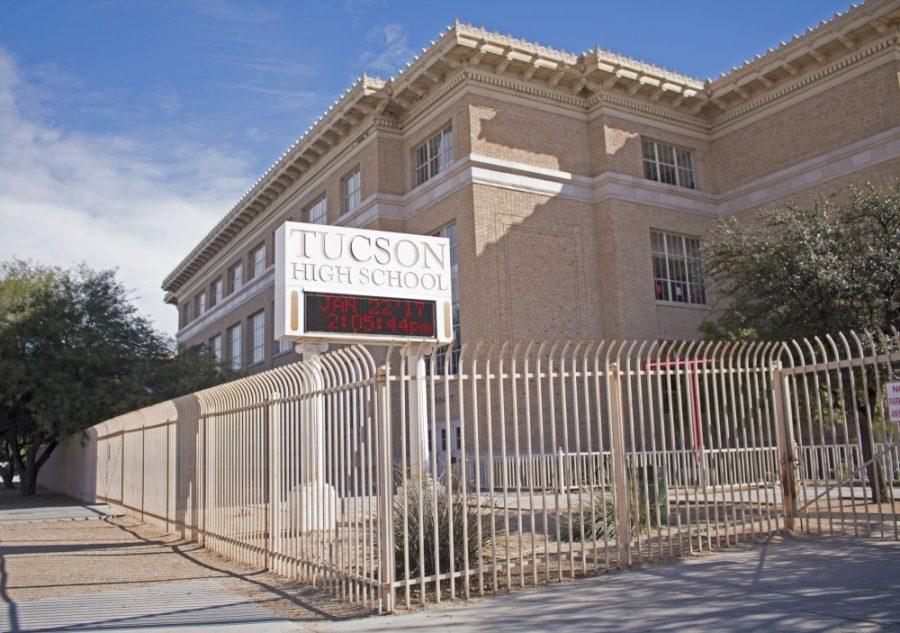Arizona Governor Doug Ducey’s recent executive budget proposal to allocate more tax dollars for K-12 and higher education touches on a decades-long debate over American education funding. The debate, which one can catch a glimpse of by opening any local newspaper that covers the issue of state education, tends to be dominated by one overriding issue: funding.
Increased funding, many education advocates reiterate, is the panacea to our education problems, particularly for K-12 education. More money for facilities, maintenance, textbooks and technology is key to improving lackluster outcomes, giving children a sense of purpose in a competitive world and boosting disappointing test scores.
The argument has an intuitive ring to it. When most of us picture struggling schools, we probably think of children reading outdated, mold-eaten textbooks in musky classrooms as teachers struggle to teach emerging scientific concepts with materials from the 1960s.
This somewhat embellished imagery is painted for us by documentaries like, “Waiting for Superman” and campaigns for increased school funding, does have some truth behind it.
RELATED: Trump is the unpresidential president-elect
Funding for Arizona school facilities in particular was the first to go in a series of deep cuts to the state budget after the 2008 Great Recession. There are also many schools throughout the state and nation that haven’t had basic facilities, like laboratories and drinking fountains, updated in over 50 years.
But increased funding for education, while it should always be encouraged, is ancillary to the educational problems faced by Arizona and the United States as a whole. The real image of a failing school in the US is not one beset by budget crises or a lack of resources.
While the problems of obsolete technology and decaying facilities are definitely pervasive in certain poverty-stricken pockets of the nation, the real problems students and teachers face across the US is more systemic. It’s one where lower standards and performance are normalized, the role of teachers as professionals is marginalized and disregarded and priorities for recognition are placed in athletic programs over academic achievement.
 To see why this is so, one needs a global perspective on education. Some of the top performing schools throughout the world, especially in Poland, South Korea and Japan, produce the best-educated children with a fraction of the resources employed in the US, which is comparatively mediocre in international benchmarks for education.
To see why this is so, one needs a global perspective on education. Some of the top performing schools throughout the world, especially in Poland, South Korea and Japan, produce the best-educated children with a fraction of the resources employed in the US, which is comparatively mediocre in international benchmarks for education.
Amanda Ripley, in her book “The Smartest Kids in the World,” discovered the same phenomenon through her investigation of foreign school systems. The common thread she finds in these schools is neither a significant devotion of state resources to education, nor constant and costly investment in new technology. Instead, what she uncovered was a culture of pushing and encouraging students through rigorous challenges rather than coddling them.
Treating the job of teaching as a profession to be respected, rather than mocked or avoided, and placing more focus in academic accomplishments rather than sports and athletics. When we debate issues in education, these three factors, not just funding, should be at the top of our discussion. To be clear, we should not slash funding for public schools or higher education, especially if that extra funding goes towards increased incarceration and corrections facilities. We also shouldn’t ignore or undercut the important contributions that robust school athletic programs have brought to our education system.
Technology, updated textbooks, athletic scholarships, supportive coaches and well-maintained facilities can all be gateways to a more effective, engaging education for students, whether they’re in kindergarten or preparing to graduate college. These resources won’t go far if they’re placed in a system where students are coddled, instructors are disrespected and academic achievements are placed secondary to athleticism.
Ducey’s budget proposal does make limited positive steps in realizing some of the above goals. In addition to boosts in state spending for K-12 and higher education, it provides very modest increases in teacher salaries, bonuses for teachers at low-income schools, extra funding for top-performing institutions and forgiveness of student loans for students teaching in the fields of science, technology, engineering and math.
RELATED: Defunding Planned Parenthood is a mistake
Raising teacher salaries and deferring their debt is a step in the right direction if we want to recognize the crucial function they play in a well-functioning educational system. Like doctors or lawyers, teachers deserve to be treated as professionals that are endowed with one of society’s most important roles: educating future laborers, professionals and citizens.
It’s arguable whether these budgetary changes, which many political opponents and critics decry as piecemeal and meaningless in the long term, will do much to move the needle in a positive direction for test performance, graduation rates or education outcomes in the next few years.
To realize major changes in a disappointing educational system, we must realize major changes in how we think about education. This may require a critical reexamination of the cultural, historical and economic factors that have shaped US education, as well as a reckoning of what our true priorities are when we discuss the educational future for students.
Funding, while it might be a metric of how much we care about education, is not a measurement of quality or achievement. To reach those goals, we must change how we treat students, value teachers and recognize academic achievement.
Follow Isaac Rounseville on Twitter.









